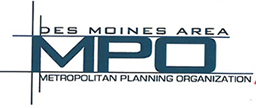Choice. What does it mean, why is it important, and how does it fit within The Tomorrow Plan? The reality is that we all make choices every day. Some of these choices are flexible, such as the decision about where to eat lunch or which shirt to wear. Some of these choices are limited or constrained, such as the time you arrive at work or school. Which choices you make, and, thus, the actions you take, are largely dependent on the range of options you are able to choose from. This is true in daily life, communities, and society as a whole.
Every day, billions of decisions are being made by billions of people. We all know that we have to make decisions about where to live, where to work, and where to go to school. But are those decisions completely flexible, or are they constrained? Many would argue that an individual’s choice about where to live is limited by income, whether or not they have children and want a school in close proximity, and where their place of employment is located. All of these factors narrow the range of options that an individual has to choose from. Narrowing the choices available is not necessarily a bad thing, and making decisions is a necessary part of life. However, starting out with a limited set of alternatives can often leave individuals with very few opportunities to make choices that best suit their needs.
So how does development factor into the options that are available and the choices we can make? The options that are available to us are affected by many things, including the environment, the economy, and other people. This often means that, as our population grows, so, too, does the potential for individual decisions to affect another’s ability to make that same choice. However, perhaps the individual making the decision to drive would prefer to bike to work instead. Yet, because there are no bike lanes or paths along the route to work, their decision to bike is constrained. So this individual decides to drive to work, limiting available parking spaces downtown for those that want and need to commute by car. This is where regional planning for bike paths that are interconnected and allow the option of bike commuting to all areas of the metro would be beneficial to that individual and others.
Regional planning is not about limiting or constraining an individual’s ability to make a choice. Rather, it is about planning for a wider set of options, like transportation and natural water, so that everyone in the community has the ability to make a decision that best suits them. Without a wide variety of options, individuals are often limited at the outset, which reduces their capacity for choice as other factors such as available space narrow their alternatives. George Eliot once wrote, “The strongest principle of growth lies in human choice.” In a community where a wide range of options is planned and allowed for, individuals and families alike may create better opportunities for themselves and others. Creating a wider set of options is an important component of a successful community and economy, and one of the core principles of The Tomorrow Plan.
However, before we are able to create a wider set of options for ourselves and our communities, we must first understand what limits these options to begin with. For this reason, The Tomorrow Plan has created Design My DSM to show community members how their choices about development affect the region as well as the amount of options available to its citizens. To see how various types of development can expand or limit your own options, visit http://designmydsm.thetomorrowplan.com. Taking steps toward a better community starts with understanding how you and others define what you want from that community and the actions necessary to make it a reality.
 Todd Ashby is the Executive Director of the Des Moines Area Metropolitan Planning Organization (MPO). In this position, he oversees the operations of the MPO and works closely with the membership to implement the MPO’s plans.
Todd Ashby is the Executive Director of the Des Moines Area Metropolitan Planning Organization (MPO). In this position, he oversees the operations of the MPO and works closely with the membership to implement the MPO’s plans.



